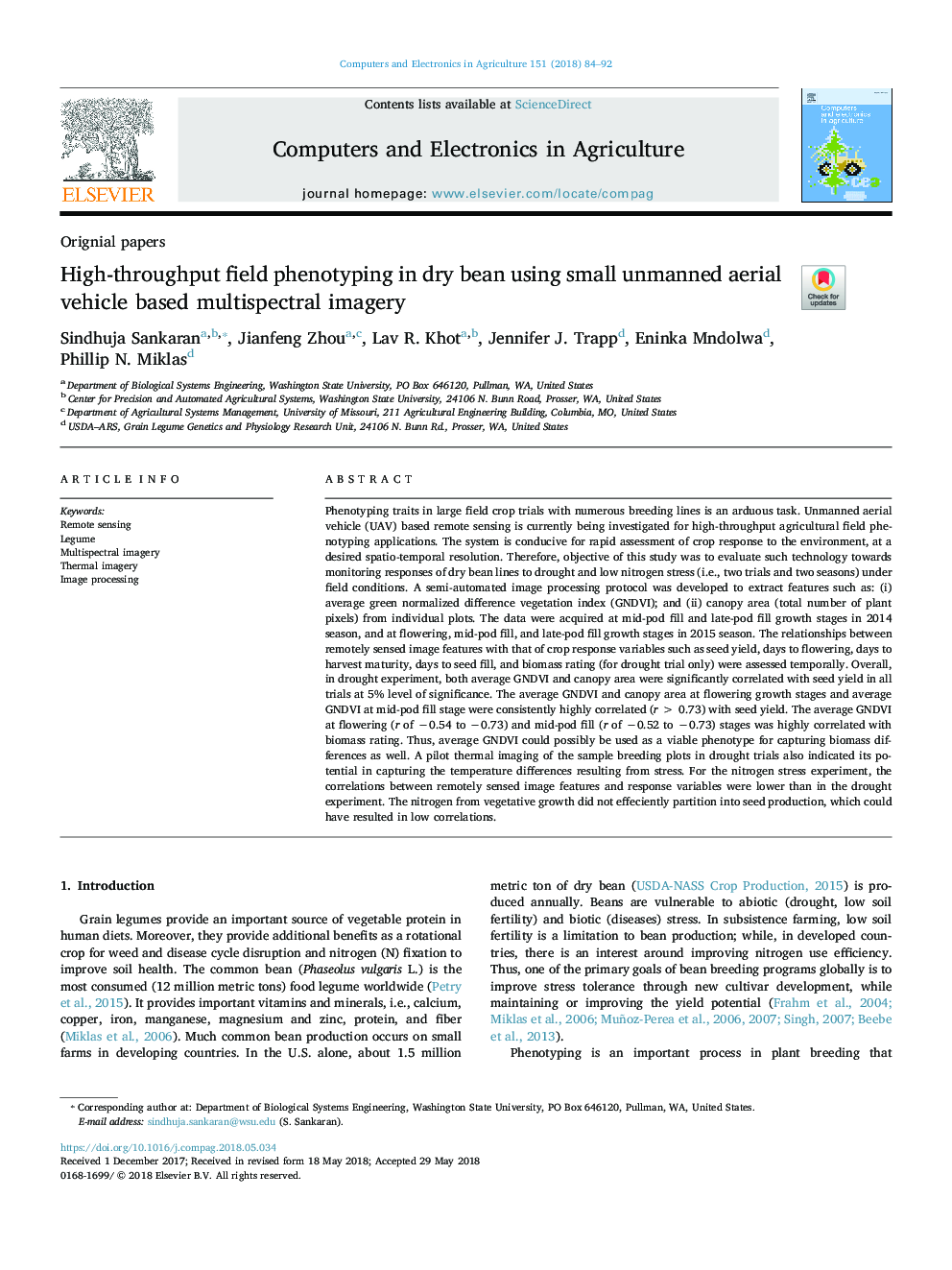| Article ID | Journal | Published Year | Pages | File Type |
|---|---|---|---|---|
| 6539328 | Computers and Electronics in Agriculture | 2018 | 9 Pages |
Abstract
Phenotyping traits in large field crop trials with numerous breeding lines is an arduous task. Unmanned aerial vehicle (UAV) based remote sensing is currently being investigated for high-throughput agricultural field phenotyping applications. The system is conducive for rapid assessment of crop response to the environment, at a desired spatio-temporal resolution. Therefore, objective of this study was to evaluate such technology towards monitoring responses of dry bean lines to drought and low nitrogen stress (i.e., two trials and two seasons) under field conditions. A semi-automated image processing protocol was developed to extract features such as: (i) average green normalized difference vegetation index (GNDVI); and (ii) canopy area (total number of plant pixels) from individual plots. The data were acquired at mid-pod fill and late-pod fill growth stages in 2014 season, and at flowering, mid-pod fill, and late-pod fill growth stages in 2015 season. The relationships between remotely sensed image features with that of crop response variables such as seed yield, days to flowering, days to harvest maturity, days to seed fill, and biomass rating (for drought trial only) were assessed temporally. Overall, in drought experiment, both average GNDVI and canopy area were significantly correlated with seed yield in all trials at 5% level of significance. The average GNDVI and canopy area at flowering growth stages and average GNDVI at mid-pod fill stage were consistently highly correlated (râ¯>â¯0.73) with seed yield. The average GNDVI at flowering (r of â0.54 to â0.73) and mid-pod fill (r of â0.52 to â0.73) stages was highly correlated with biomass rating. Thus, average GNDVI could possibly be used as a viable phenotype for capturing biomass differences as well. A pilot thermal imaging of the sample breeding plots in drought trials also indicated its potential in capturing the temperature differences resulting from stress. For the nitrogen stress experiment, the correlations between remotely sensed image features and response variables were lower than in the drought experiment. The nitrogen from vegetative growth did not effeciently partition into seed production, which could have resulted in low correlations.
Related Topics
Physical Sciences and Engineering
Computer Science
Computer Science Applications
Authors
Sindhuja Sankaran, Jianfeng Zhou, Lav R. Khot, Jennifer J. Trapp, Eninka Mndolwa, Phillip N. Miklas,
